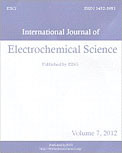Dospivova D, Smerkova K, Ryvolova M, Hynek D, Adam V, Kopel P, Stiborova M, Eckschlager T, Hubalek J, Kizek R. Int. J. Electrochem. Sci., 7 (2012) 3072–3088. IF: 3.729

Department of Paediatric Haematology and Oncology
Abstract
Using of platinum based cytostatic drugs in tumour diseases treatment results in the need to detect these drugs in biological samples and to determine and study the Pt-DNA adducts, which is highly important for investigation of cisplatin-resistance developed during anti-tumour treatment. The aim of this study was not only electrochemical detection of cisplatin with the use of formazone method but also preparation of platinum-DNA complex and platinum content detection in DNA. Primarily, we optimized manual electrochemical detection using differential pulse voltammetry (DPV) for PtCl2 and cisplatin. The detection limits (3 S/N) were estimated as 10 pM and 30 nM for PtClPtCl2 and cisplatin, respectively. Further, we automated the optimized method and reached 50 pM detection limit for PtCl2, but the method was proved to be versatile also for detection of cisplatin, which was verified by determination of cisplatin added cell culture medium. The method was also used to monitor the content of cisplatin bound into DNA and was verified by agarose gel electrophoresis. Moreover, we used UV irradiation and ultrasound to study changes in Pt-DNA adducts using above optimized DPV for detection of platinum signals and square wave voltammetry for detection of DNA signals. The suggested method could be applied for measurements of low volumes of isolated DNA due to the low detection limits and versatility.
-Michaela Kotrová-
